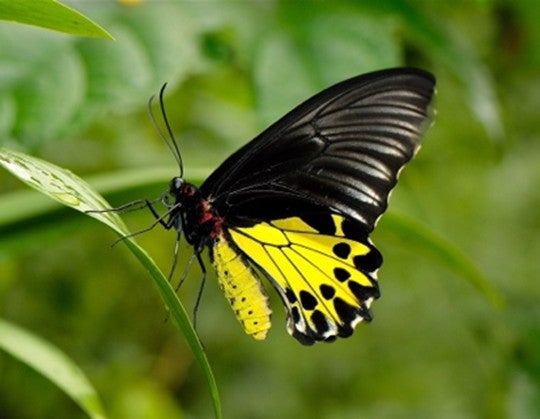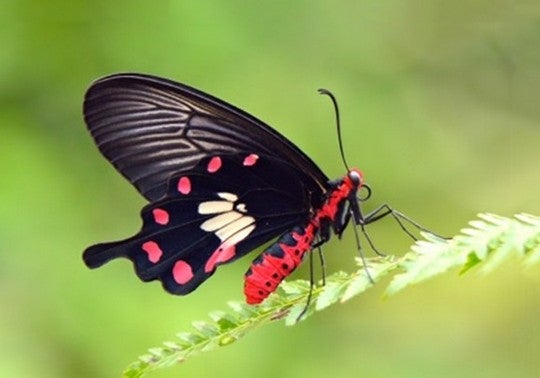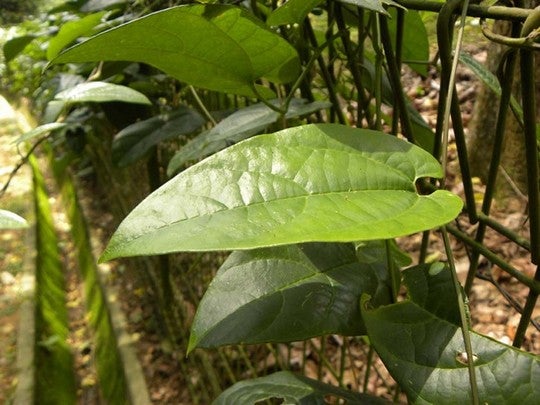Local butterflies which enjoy exotic plants
Edward WEBB (Group Leader, Biological Sciences) May 25, 2021NUS scientists show that two of Singapore’s threatened butterfly species are now critically dependent on a non-native caterpillar host plant, the Dutchman’s Pipe (Aristolochia acuminata) that is planted as an ornamental plant in parks and gardens. The butterflies are two swallowtail species – Common Birdwing (Troides helena) which is Singapore’s largest butterfly and the Common Rose (Pachliopta aristolochiae) which is voted Singapore’s national butterfly. The butterflies’ native host plant was last recorded in the Jurong swamp of Singapore in the 1930s.
The PhD research of Dr Anuj JAIN, under the supervision of Prof Edward WEBB from the Department of Biological Sciences, National University of Singapore mapped the distribution of the two butterfly species and their non-native host plant across the local landscape in Singapore. Using machine learning models (random forest algorithms), they established relationships between various habitat and life-history parameters associated with the butterfly distributions. The researchers found that both butterfly species had clustered distributions with a greatly reduced probability of finding them further away from the identified population sources and non-native host plant.
Together with 30 butterfly experts, the study identified 14 potential locations in Singapore which are inhabited by both species, and at these locations the butterflies are dependent on the Dutchman’s Pipe. These novel findings have widespread implications, as the situation in Singapore is likely to be reflective of other tropical cities that have lost much of their natural habitats and witnessed an increase in the introduction of non-native plants.
Dr JAIN said, “The long-term survival of these butterfly species is currently dependent on urban plantings which are prone to frequent landscape changes. This dependence makes the butterflies particularly vulnerable to extirpation.”
As part of conservation, a planned habitat enrichment strategy may be needed to increase the size and number of existing butterfly populations, and improve the connectivity between them. Reintroduction of the butterflies’ native host plant Aristolochia jackii can be assigned a higher priority as the larval survival rate on native host plants may be higher compared to their non-native counterparts. If the re-establishment of the native plants is not successful, planting of the non-native host is recommended as a secondary strategy. However, the wider ecological consequences of non-native plantings will have to be carefully studied before such a strategy can be widely adopted for conservation.
Prof Webb said, “For decades, and with good reason, non-native plant species were generally viewed as being detrimental to ecosystems by displacing native species, changing local environmental conditions, and co-opting ecosystem services of pollinators and seed dispersers. More recently, however, it has become apparent that some non-native species may, in fact, provide unexpected benefits for conservation. This study is important because it demonstrates unequivocally that a non-native plant is almost exclusively responsible for preventing the local extinction of two iconic butterfly species of Singapore.”

Common Birdwing butterfly. [Credit: Tea Yi Kai]

Common Rose butterfly. [Credit: Tea Yi Kai]

Common Birdwing and Common Rose butterflies’s shared non-native caterpillar host plant Dutchman’s Pipe Aristolochia acuminata. [Credit: Anuj Jain]
Reference:
Jain A*; Zeng Y; Webb EL*, “Critical Dependence of Butterflies on a Non-native Host Plant in the Urban Tropics” Frontiers of Ecology and Evolution DOI: 10.3389/fevo.2021.655012


